Anatomy DefinitionWe often hear "anatomy" when learning about the body and how it works. What exactly is anatomy? And how would we define it? Anatomy studies a specific biological branch of science associated with the structure and classification of the bodies and various sections of organisms. Though the term "anatomy of the body" is commonly used to refer to humans and human body parts, it refers to all living things. This branch has two types of anatomy: gross or macroscopic and microscopic. Etymology: Latin anatomia is derived from Ancient Greek *v (*anatoma): (aná) means "up" and (témn) means "I cut" or "I incise". According to the definition of biology, anatomy is the study of the formation of an organism's body. Biology is the research into the physical structure of living organisms. History of AnatomyHumans are peculiar, and we have always been interested in how our bodies grow and develop. Researchers have found drawings, hyroglifics, and anatomical structures dating back to 750000 BCE in caves. Despite their simplicity, the drawings demonstrated that primitive humans had considerable knowledge of human anatomy. It has also been established that humans began to perform minor "medical" procedures as early as the Paleolithic Period like a small hole was made into the skull of an individual who is mentally ill. Though the reasoning was rarely scientific, some of those who undertook these procedures survived, signifying a medical breakthrough. The Ancient Romans used to treat injured gladiators to learn more about anatomy. However, because the dissection of human bodies was prohibited, this could only be done underground. As a result, the Romans used animal anatomy and bodies to compare their findings to humans. During this time, the researcher and experimentalist Galen became a practicing physician. He studied macroscopic anatomy, the majority of which involved animal dissections. His discoveries would live on for generations to come. 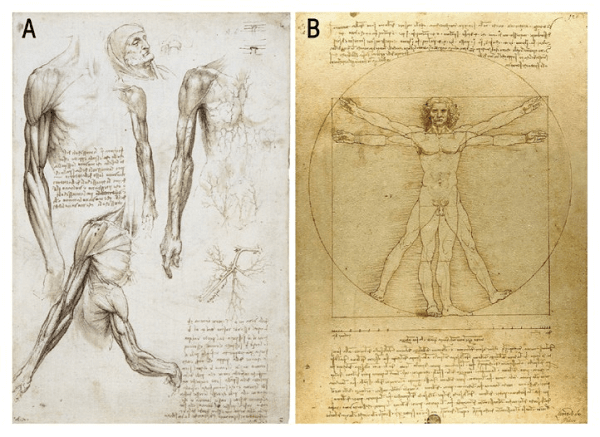
Great artists, including Leonardo Da Vinci and Rembrandt van Rijn, created anatomy charts and sketches during the Renaissance. These artists laid the groundwork for advanced anatomical sketches and organ system diagrams of the human body. After dissecting human body parts, the artists worked with scientists to generate anatomically accurate sketches. Andreas Vesalius, who contributed significantly to anatomy through his detailed research of dissected humans and worked on the initial book on human anatomy, also worked during this Period. Numerous anatomists and physicians contributed to the progress of medical knowledge and the development of modern anatomy from the 17th to the 20th centuries. Until then, scientists who wanted to dissect living humans or study human internal organs and tissues with cadavers faced discrimination. Abraham Flexner's best-known article from the 20th century emphasized the importance of using body organs in medical research and how dissections add value to primary medical education and training. This helped to restore normalcy in the sector of anatomy and pushed medical discoveries that we now know about. Important Figures in AnatomyMany historical anatomists contributed to what we now call anatomy. Biology fields commonly become more diverse due to extensive research conducted by scientists, doctors, and medical experts who explore deeper into those studies. An anatomist or an anatomy expert may research the entire body or specific areas. William Harvey was an English physician who lived between 1578 and 1657. He is best remembered for being King James since he is the First's official physician and for research into the circulatory system. Though others had proposed that blood could be pumped around the body, Harvey stated these theories with assertions and experiments. Harvey calculated and estimated the blood volume that would pass through human organs over a given period using volume. He also investigated how the heartbeat functioned as a pump to transport blood throughout the body. Because the body could not produce that much blood at once, it must be circulated. Harvey's work was criticized after being published in a medical journal in 1649, but it was eventually accepted. Andreas Vesalius is another well-known anatomist. He lived in Greece until he was 50 years old, where he studied and wrote extensively about human physiology and anatomy. After receiving his doctorate, Vesalius spent much of his time dissecting and examining cadavers. Andreas became fascinated by this and began to follow a sequence of studies that included performing dissections and studying ancient scientific texts in depth. He also discovered that many universities use Galenic anatomy which is based on animal anatomy instead of human body systems. This could be because human dissection was previously prohibited. This discovery aided his development of one of the initial anatomical textbooks, 'Fabrica,' published in 1543. 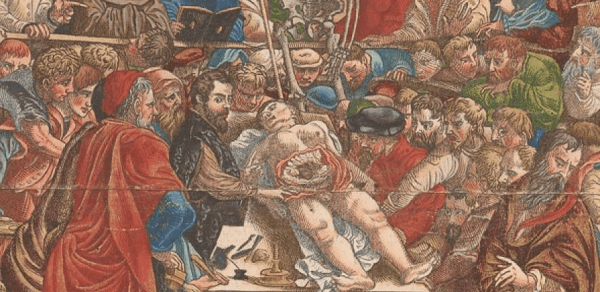
Paul Broca, a French anthropologist, and pathologist studied brain lesions that helped modern biology for a better understanding of cranial functions. He was also the first to show that specific brain sections were associated with functions in the human body's systems. In 1861, his discovery is now known as the Broca convolution, a section of the brain's left frontal lobe that aids speech articulation. Georges Cuvier is credited with establishing comparative anatomy and paleontology. His marine invertebrate tutoring work was sent to the Natural History Museum in Paris, where he was expected to participate in their team. He was the first to classify animals according to their bodily systems. This rejected the traditional anatomical organization used before the 18th century, allowing others to investigate why animals are anatomically different. All of this helped Curvier to the groundwork for paleontology as a science. Gross anatomyOne of the divisions of anatomy is gross anatomy. This macroscopic anatomy theory can be observed with the naked eye. The study of tissues and their structures is known as histology, whereas the study of cells which is the first basic unit of life, is known as cytology. To supplement cytology and histology, gross anatomy is used. Because they describe the exploration of each trait of an organism's body part, gross anatomy, growth, and progression is frequently used to describe it. 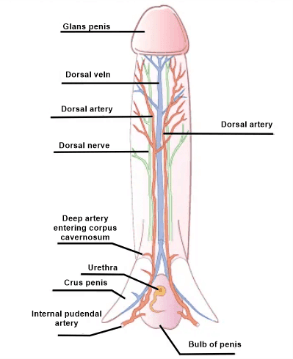
Surface, regional, and systemic anatomy are divisions of macroscopic anatomy. In that order, these are concerned with the outside of the body, body regions, and specific body systems. To understand and observe surface anatomy, we do not need to dissect. This section looks at the external body form and what it does to allow the body's function while protecting internal structures. Regional anatomy examines specific body sections and how they interact to perform various functions. The gastrointestinal and circulatory systems are two of the eleven (11) body systems studied when studying systemic anatomy. Gross anatomy studies the macroscopic structure and organization of organs and their systems using invasive and non-invasive methods. Dissection is one of the most common research methods, in which an animal or human cadaver's corpse is surgically opened, and its organs are studied. Endoscopy, which involves inserting a video camera-equipped machine through a small incision in the subject, can be used to examine the vital organs and many other structures of living animals. Microscopic AnatomyMicroscopic anatomy is the study of the microscopic forms of organisms. Microscopic anatomy and histology are sometimes used interchangeably, but this is inconsistent because microscopic anatomy contains both histology and cytology. Histology is the observation of how cells, the body's building blocks, develop from cells to tissues to organs and organ systems. These various stages of development combine to form a living thing. On the other hand, microscopic anatomy only deals with tissues and smaller entities because these are the only ones that can fit under the microscope. 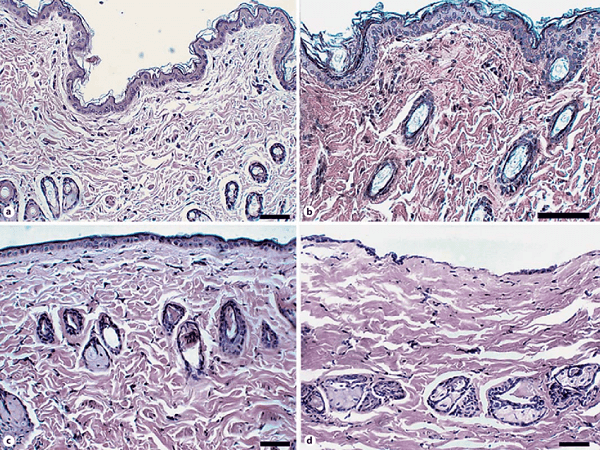
Microscopic anatomy, as previously stated, includes histology and cytology. Both require thin cutting of organs to acquire specimens for microscopes. This can be performed on both living and dead tissues and cells. These are then dyed to add depth and discoverability between organelles and cell and tissue components. This method makes studying the anatomy of tiny body parts easier. Other Anatomy DisciplinesThere are numerous divisions of anatomy in addition to macroscopic and microscopic anatomy. Embryology, radiographic anatomy, developmental anatomy, and pathological anatomy are the four major ones. Embryology, as the name implies is the study of an animal's embryo. An embryo exists between the egg's fertilization and the eighth week of an organism's life. It investigates cell differentiation, branching, and gastrulation in organisms. It is frequently referred to as the foundation for comprehending how nervous systems and other vital animal parts develop and function. This research has also recently contributed to a better understanding of stem cells and their relationship to cancer. Developmental anatomy is a broader and longer study than embryology because it spans from fertilization to middle age. It examines how the organism's body changes throughout its life. This study describes anatomy by focusing on all attributes of the body form. Radiographic anatomy is the examination of the body and all the systems and organs using radiology in the form of x-rays. Radiographs or computerized tomography (CT) scans can be used. These convert the three-dimensional form of the body into a two-dimensional image, allowing a radiologist or medical doctor to see the systems in real time. 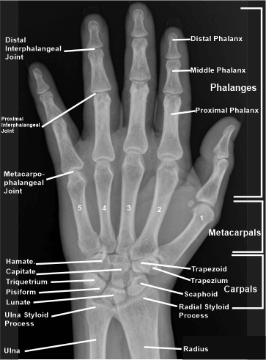
Pathological anatomy is the study of anatomy as the disease impacts it. This research aids in diagnosing and treating various diseases by microscopic examination of recordings from bodily fluids, tissues, organs, and, in some cases, the entire body or autopsy. Human AnatomyHuman anatomy is the most widely known branch worldwide for obvious reasons. However, you must first understand its structure or form before understanding how the body's parts function. Here is where human anatomy plays a role. The human body's organization is a unique system in and of itself. We begin with the cell, the basic building block of the body cells joining together to form tissues, and tissues joining together to form organs, which join to form organ systems. The human body is made up of these 11 body systems. 
Cells, the smallest unit in the body, make up all other body parts. The stem cell is the most fundamental type of cell, capable of developing into any given species required by the body. Over 200 specialized cells exist in the human body, ranging from reproductive cells that aid in making progeny to red blood cells that mobility oxygenated and deoxygenated blood throughout the body. Tissues are collections of cells with similar features that collaborate to function. There are four major types of tissues: epithelial, muscle, connective, and nervous. The primary tissues of the glands are epithelial tissues, which perform various functions such as absorption, secretion, and filtration. Connective tissues join structures, forming a strong support system and securing it against disease. Muscle tissues are specifically designed to aid in the movement of the body. These include the cardiac tissues, which contract and relax to allow the heart to pump blood around the body. A major part of the spinal cord, brain, and nerves comprises nervous tissues. These oversee controlling the body and its functions, including coordination. Organs are structures that serve specific purposes. The lung facilitates gas exchange, allowing blood cells to receive and expel carbon dioxide. Among other things, the skin acts as a barrier against invaders and protects and regulates temperature. Organs are formed when different types of cells and tissues combine. Organ systems are formed when these organs work together with other organs. There are eleven (11) organ systems in total. Among these systems are the following: muscular system
Each of these contributes to the physiology and anatomy of the body. The immune cells in the body are a biological system that collaborates with the lymphatic system. Anatomical NomenclatureA distinct way of referring to items and regions of an organism's body emerged as the branch of anatomy evolved over periods. This is known as anatomical nomenclature, it is used by scientists and medical doctors. This terminology is only officially available in Latin. Because terms like 'up' and 'down' can be challenging when referring to the human psyche depending on its position, anatomical nomenclature was developed. As result, researchers and medical personnel can follow along while another person describes the position of a body part. 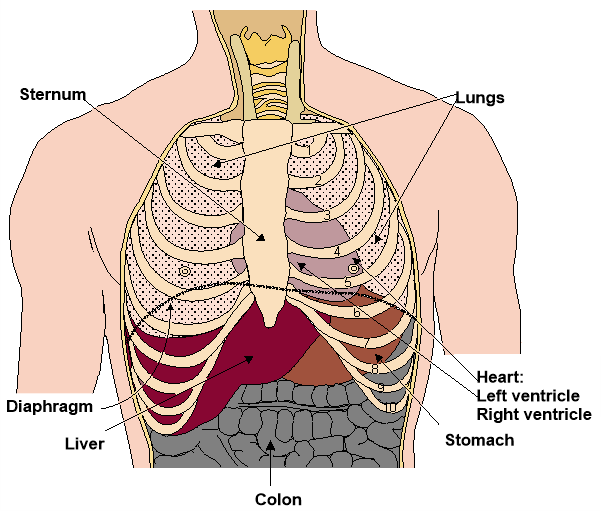
The standard anatomical posture is a human standing erect on legs, palms facing forward. This standard position can describe many things using anatomical terminology, such as superior implying towards the head or inferior signifies towards the feet. For example, the heart is posterior to the sternum, which means it is anatomically 'behind' the sternum. Furthermore, despite its proximity to the end of the upper limb, referring to a hand as a part of the superior extremity indicates it is part of the upper part of the body (i.e., the upper limb).
Next TopicAntibody Definition
|
 For Videos Join Our Youtube Channel: Join Now
For Videos Join Our Youtube Channel: Join Now
Feedback
- Send your Feedback to [email protected]
Help Others, Please Share









